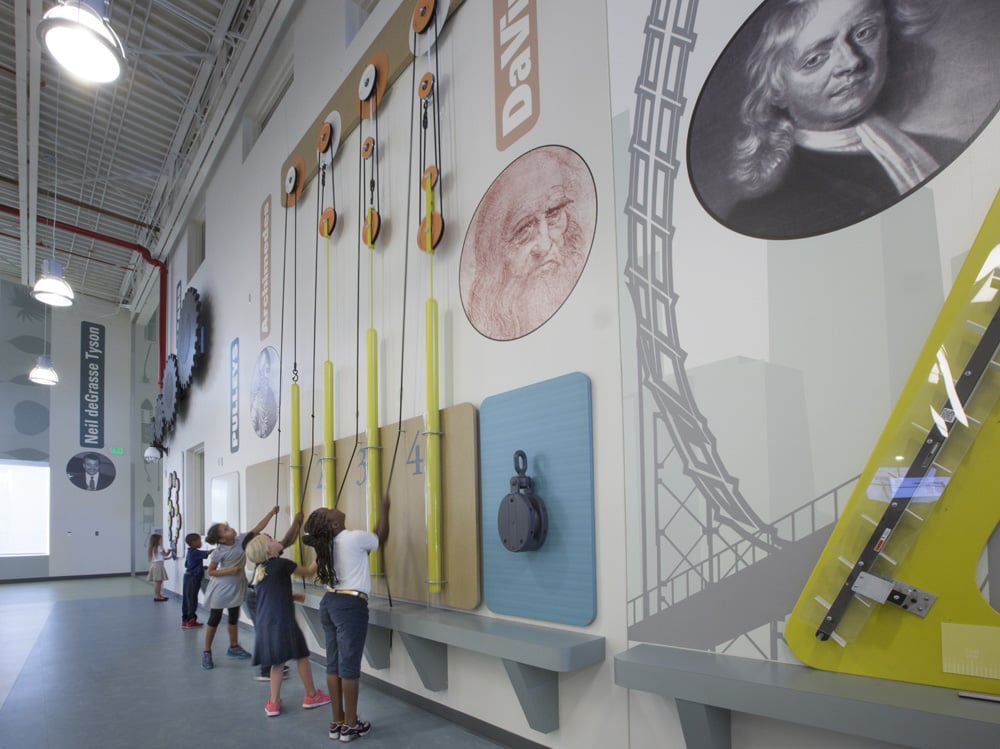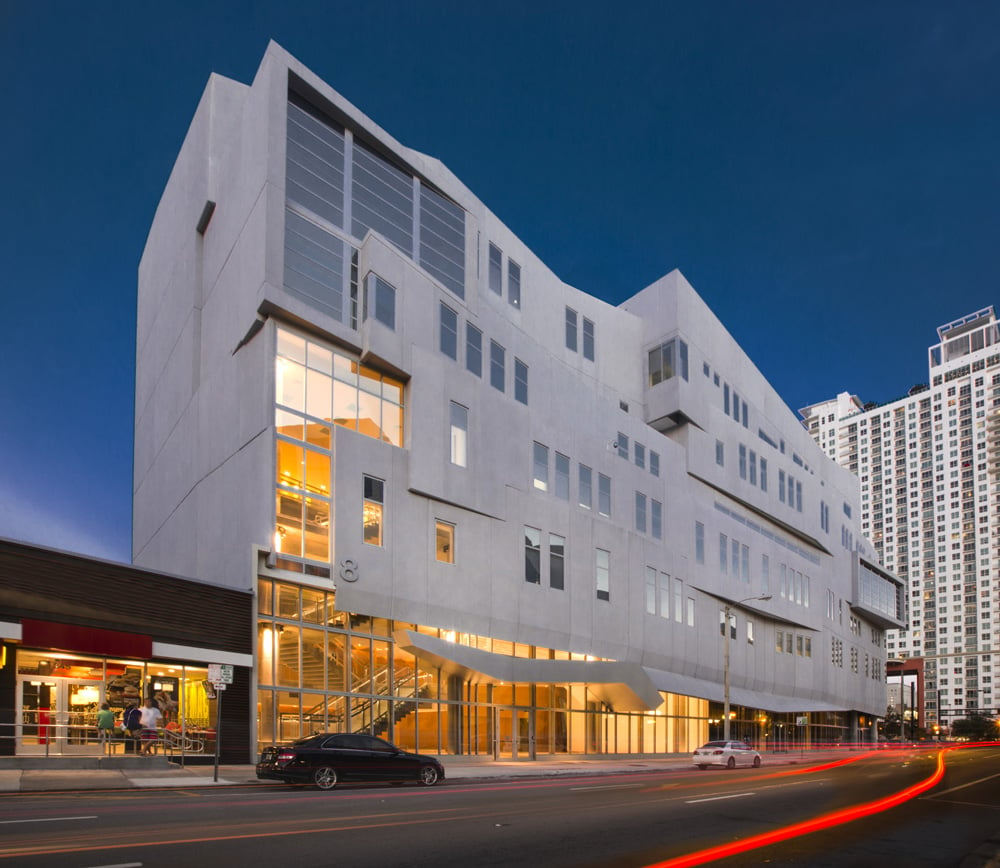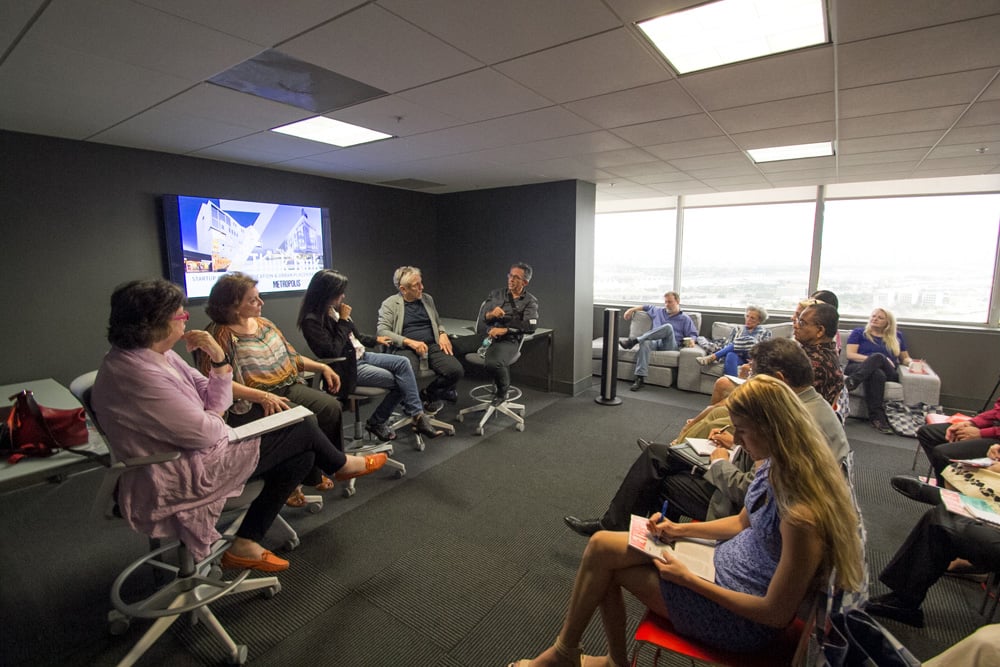
December 19, 2017
Start-Up Culture in Education and Urban Placemaking
A Q&A with Zyscovich Architects on how education start-ups are bringing new ideas to schools and urban planning.
For the past two years, Metropolis’s publisher and editor in chief, Susan S. Szenasy, has been leading a series of discussions with industry leaders on key issues surrounding human-centered design. On December 7, 2016, she went to Miami to discuss how education start-ups are influencing 21st-century models with representatives from Zyscovich Architects, the development firm the Vagabond Group, and the education innovator behind MAST Academy. What follows is an edited transcript of the conversation, prepared by Claudia Marina.
START-UP CULTURE SHAPING EDUCATION
Susan S. Szenasy, director of design innovation, Metropolis (SSS): Today’s start-up culture seems to be exerting a great deal of influence in many areas. Let’s look at how it infiltrates urban planning and education. I’d like to start by asking how an integrated design firm like Zyscovich Architects defines the start-up ethos and what it means to culture at large.
Jose Murguido, AIA, REFP, CEFP, partner, Zyscovich Architects (JM): The notion behind start-up culture is innovation, and my role as an architect and an educational facility planner in our education studio has really been affected by this idea. We’re seeing the start-up culture shape where education is going. We can trace the shift to about 17 years ago, when Gary Jacobs, an employee at a big wireless tech company, found that the needs of his workforce were not being met by the types of students coming out of local schools in San Diego. In typical start-up fashion, he created High Tech High, which operated as a learning-by-doing culture—essentially the foundation of the innovation economy. That, in turn, launched a whole education movement that continues to shape how we reinvent schools with an emphasis on creativity, risk taking, and collaboration and a de-emphasis on traditional measurement standards. The students coming out of these programs exceed the performance of students at conventional schools, and they’re prepared for the industry.
SSS: Dr. Eads, you’re a former educator and school board member at Miami–Dade County Public Schools. Tell us about your experience with the MAST Academy, a school that has gained recognition for innovation.

Dr. Linda J. Eads, founder, MAST Academy (LE): I’ll start by saying that anyone who is working with educators and designing an educational facility must first have a vision. I wrote the proposal for MAST, including its philosophy, goals, and expected outcomes. In 1991, when I opened MAST Academy, I hired and trained the teachers according to this collaborative vision, which made a world of difference. Through professional development, we taught teachers to teach differently. The whole curriculum of vocational, marine-themed programs stemmed from a need in the community where, at that time, there was no avenue for underserved black children to go into math and science fields within the Miami–Dade County Public Schools system. This type of school evolved from an earlier program I created called the Inner City Marine Project. Eventually, I started to gain parents’ trust when they saw their children learning on the Miami River or Biscayne Bay and experiencing education outside of their traditional schools.
SSS: And what was the secret to how you pulled it off?
LE: To be effective, a school has to have partners. I went to the school board to present the proposal for MAST Academy with 27 community partners from local universities such as the University of Miami Rosenstiel School of Marine and Atmospheric Science to the Port of Miami and even corporations like Royal Caribbean Cruises. This collaboration is affective, and now I’m working with Zyscovich on a new middle-high school in downtown Miami.
Bernard Zyscovich, FAIA, managing partner and CEO, Zyscovich Architects (BZ): When Linda told me about her idea for this new school, what I found inspiring was that it was based on the very specific needs of students who were really connected to music, the arts, and business. I believe in real urbanism—that is, searching for what’s unique in the elements we’re presented with. Linda brought the start-up mentality to education, but of course the trend is bigger. We’re looking at creating an entire start-up neighborhood in Miami called Mana Wynwood. From an urban planning perspective, there is a drive to make our places more collaborative so we can learn from and interact with each other.

INNOVATION CULTURE AND CITIES
SSS: Certainly, innovation culture is bringing very different kinds of people into Miami. How is the city adapting to this in urban planning?
Avra Jain, founder, the Vagabond Group (AJ): As a developer, my focus is on creating neighborhoods, which, in Miami, are often quite diverse—neighborhoods like Little Haiti, Little Havana, Wynwood, Hialeah, Little Puerto Rico, and Little Venezuela. We’re starting to see neighborhoods being built within those submarkets, and then it’s just about creating connectivity to make it feel like more of a city. With development of the neighborhoods, we’ll have schools and more coworking spaces, and each of these neighborhoods will create its own identity. I think as designers, we’re recognizing that keeping things in context is part of what creates the environment.
JM: Yes. In a way, cities are a slow phenomenon. After you start an urban development and you have it fully leased, you’re really at the end of the beginning. Now you have to create a sustainable community, and that’s where education plays a key role. Parents putting their children in elementary schools are committing to staying at least the next five years. Strong schools are anchors in sustaining economic development in cities, and it’s this kind of soft infrastructure that brings people together and commits them to a place.
SSS: And yet, with Miami becoming so attractive to people from other places—New Yorkers, for instance, who might want to turn on their air conditioners and lock everything out—how do you maintain what’s unique about Miami in terms of urban planning and culture?
AJ: It’s the developer’s job to show them how it can be done differently. Sustainability is a big part of the Vagabond Group’s mission, so we do a lot of adaptive reuse of space. These days I have tenants who will pay more to be in an old building than a new one, which certainly wasn’t the case before. One project I worked on was turning the old South Pacific Motel on Biscayne Boulevard into a single, collaborative work campus. It still looks like the original motel outside, but inside it’s all open, single-floor collaborative office space.
BZ: I think that the collaborative innovation culture has opened up a door, not only in Miami but across the world, because we’re now so willing to interact with each other. Habit is the enemy of innovation, and we’re suddenly experimenting with everything from schools to airports to theme parks. Miami is an opportunity, if you can seize it.
SSS: Let’s dig into that, because Linda’s new school really needs a community. I don’t imagine that the entire school population can be bused in. How is that going to happen?
LE: I’ve known for over 15 years that the downtown area needed schools, but developers were building these giant condos and there was no room for schools. Bernard was able to identify a place, so I looked at the facility, and I examined the neighborhood by things like income status and what the local elementary schools were teaching. I originally thought to create a high school, but listening to the parents I found out that what they need is a middle school. I’m now planning the curriculum for sixth- through eighth-graders, and eventually our plan is to move to a larger facility to serve up to the 12th grade. In the meantime, we are still going to have a college like master schedule, and the courses will be online, in the classroom, and in the community. There is also a commitment to the city, but it requires trust and a willingness to do things differently. The modern urban school is going to require students to take the train from the north or south end of the county or just walk to the school, and that is going to take some training. I have to assure parents that their children are going to be safe.
JM: A child entering kindergarten next year will graduate from high school in 2030, which is hard to imagine. So when you talk to parents about the kind of curriculum that a child is going to need for a time of extreme uncertainty, you’re talking to a fearful audience. We need to have strong narratives to be able to give parents the confidence of understanding what’s going to happen in the future, which is why it’s important to build communities.
TACKLING THE CHALLENGES
SSS: What is design’s role in giving physical shape to these challenges?
BZ: Architects are creating places where people are the focus, not the by-product. We’re making places for people because we live in a time of uncertainty, so we need spaces that allow us to physically collaborate. The result of that is the start-up culture, which takes advantage of uncertainty in its business model. The model in urban planning used to be to put your businesses where people told you it was important to put them. What resulted was a lot of empty retail spaces all over the city. We could repurpose them, some into schools or office spaces, and create all kinds of opportunities by thinking about it from a different point of view. Start-ups have shown us that we don’t work the same way as we did, and in the future we’re not going to drive the same way, shop the same way, or teach our kids the same way. That uncertainty is the opportunity. That, to me, is exciting.

Panelists:
Dr. Linda J. Eads, founder, MAST Academy
Avra Jain, founder, the Vagabond Group
Jose Murguido, AIA, REFP, CEFP, partner, Zyscovich Architects
Bernard Zyscovich, FAIA, managing partner and CEO, Zyscovich Architects
Moderator:
Susan S. Szenasy, director of design innovation, Metropolis magazine
The Metropolis Think Tank series is presented in partnership with Corian® Design, Sunbrella Contract Fabrics, and USG.





